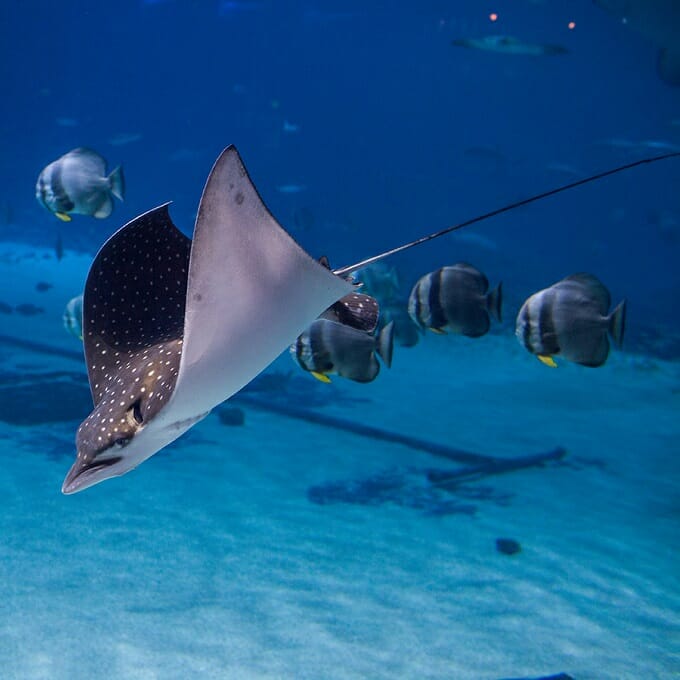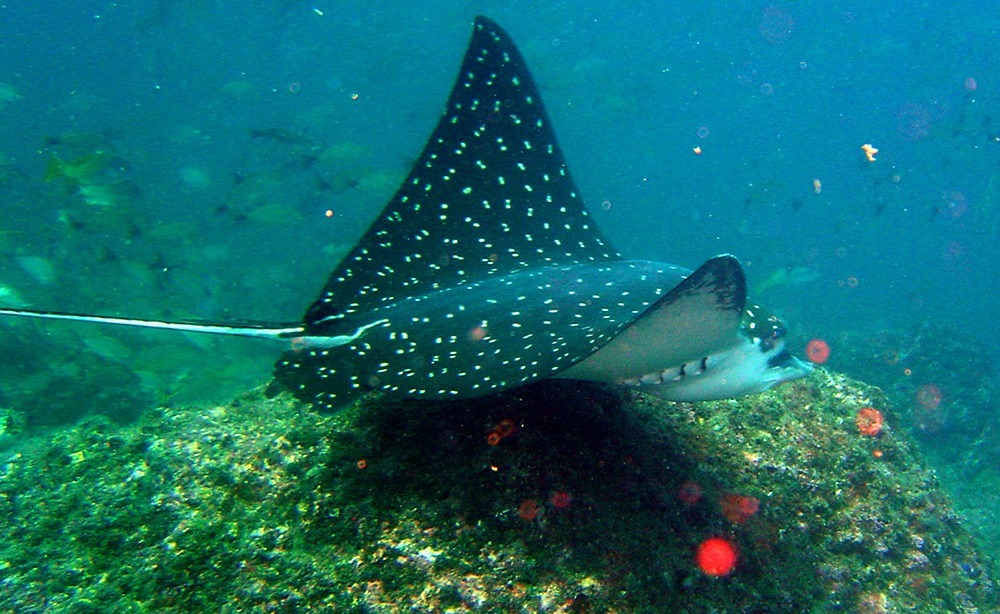Unveiling the Enigmatic World of Spotted Eagle Rays – Oceana’s Aquatic Marvels
The Spotted Eagle Ray (Aetobatus narinari) is a remarkable and captivating marine species that belongs to the eagle ray family. Known for its striking appearance, these graceful creatures are often sought after by divers and marine enthusiasts. In this article, we will delve into the fascinating world of the Spotted Eagle Ray, exploring its characteristics, habitat, behavior, and its significance in marine ecosystems.
Spotted Eagle Rays are instantly recognizable due to their distinctive appearance. They have a flattened body with a disc-shaped head, resembling the shape of an eagle’s head, which is how they get their name. These rays can grow to impressive sizes, with wingspans reaching up to 10 feet (3 meters) and weighing over 500 pounds (230 kilograms).
One of the most striking features of the Spotted Eagle Ray is its intricate spotted pattern on its dorsal side, which extends down its long, whip-like tail. These spots can vary in color from white to light yellow, and their background coloration is typically dark blue or black. This unique pattern is not only visually stunning but also helps researchers identify individual rays.
Spotted Eagle Rays are primarily found in warm, tropical and subtropical waters around the world. They are commonly spotted in the Atlantic Ocean, Indian Ocean, and Pacific Ocean, with their range extending from the eastern coast of the United States to the western coast of Africa, throughout the Caribbean, and across the Indo-Pacific region.
These rays prefer a variety of habitats, including coral reefs, sandy bottoms, seagrass beds, and rocky reefs. They are known for their nomadic lifestyle, often seen in small groups or as solitary individuals, and they can be encountered at various depths, from shallow coastal areas to deeper offshore waters.
Spotted Eagle Rays are known for their grace and agility in the water. They are strong swimmers and are often seen gliding effortlessly through the ocean. Their long, pointed pectoral fins allow them to perform elegant underwater acrobatics, such as barrel rolls and somersaults, making them a sight to behold for divers.
These rays are carnivorous and feed on a diet consisting of crustaceans, small fish, and various invertebrates. They use their flattened snouts to root around in the sandy substrate, searching for buried prey. Their electroreceptors, located on their head, help them detect the electrical signals emitted by hidden prey.
Spotted Eagle Rays are ovoviviparous, meaning they give birth to live young rather than laying eggs. After mating, females carry their developing embryos in their bodies for several months before giving birth to usually one, but sometimes up to four, pups. This reproductive strategy allows them to give birth to well-developed offspring, increasing their chances of survival.
While Spotted Eagle Rays are not specifically targeted by commercial fisheries, they often fall victim to bycatch, unintentionally caught in fishing nets and lines. Additionally, their slow reproductive rate makes them vulnerable to overfishing. As a result, they are listed as “Near Threatened” by the International Union for Conservation of Nature (IUCN).
Efforts to protect Spotted Eagle Rays and their habitats include the establishment of marine protected areas, regulations on fishing practices, and public awareness campaigns to promote responsible fishing and conservation.
The Spotted Eagle Ray is a magnificent and ecologically important species in the world’s oceans. Its beauty and behavior make it a favorite subject for underwater photographers and a thrilling sight for divers. However, the conservation of these rays is crucial to ensuring their survival and preserving the delicate balance of marine ecosystems. Through continued research, awareness, and conservation efforts, we can hope to safeguard the future of this stunning species for generations to come.
Hits: 5










